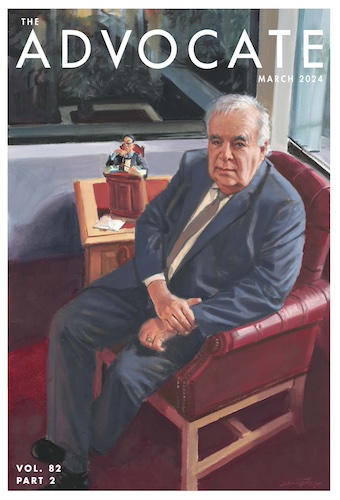Submissions
Content contributions to the Advocate are welcome.
Please send your submissions to the Editor via email by clicking here.
The Advocate considers articles that are in keeping with our mandate to publish articles “of interest to lawyers and in the lawyer’s interest”. Publication is not guaranteed and is based on the timeliness of particular articles, space within the magazine, competing submissions and ultimately the editor’s discretion.
2024 Submission Details For Authors And Contributors
| Issue | Year | Deadline |
|---|---|---|
| January | 2024 | Friday, November 3, 2023 |
| March | 2024 | Friday, January 5, 2024 |
| May | 2024 | Friday, March 8, 2024 |
| July | 2024 | Friday, May 3, 2024 |
| September | 2024 | Friday, July 5, 2024 |
| November | 2024 | Friday, September 6, 2024 |
PDF: 2024 Submission Deadlines
General Guidelines For Copyediting
There are Advocate formatting conventions which assist the editorial staff. We ask that you try and stay within 2,500 words, but we understand that sometimes something longer is necessary. The art of brevity is sadly dying.
A reading of articles in recent issues with format issues in mind will tell you most of what you need to know. For example, we never underline anything. To the extent it is necessary to mark a word or passage for emphasis, we italicise it. Our headings structure works as follows:
MAIN HEADINGS ARE IN FULL CAPS, FLUSH LEFT AND BOLDFACE
Subheadings are in Title Case, Flush Left and Boldface
Sub-subheadings are in sentence case, indented and boldface
Sub-sub-subheadings are in sentence case, indented, italics and boldface
Note that there are no numbers or letters built into our headings and, similarly, we do not have numbered paragraphs in the text of our published articles (like judgments do). We resist the Teutonic tendencies that abound in the profession; we are thus sparing in our use of capital letters. For example, we do not capitalise “plaintiff” or “defendant”. The same is true for “court” and “bench” and “bar” and “judge” and (need it be said?) “lawyer”. Longer quotations are double inset, without quotation marks. Shorter ones are built directly into the text of the article, with quotation marks to demarcate them.
We use the Canadian Oxford Dictionary and Fowler’s Modern English Usage, 2nd ed. as spelling and usage guides. Note the alternate use of “s” and “c” (avoiding U.S. spelling conventions) in the noun/verb forms of advice/advise; device/devise; practice/practise; licence/license; prophecy/prophesy.
We use endnotes, not footnotes. We follow the 7th edition of the Canadian Guide to Uniform Legal Citation (2010), so to the extent of any uncertainty, you should consult the copy of that resource for the proper way to cite cases, statutes, journal articles, text references, etc.
